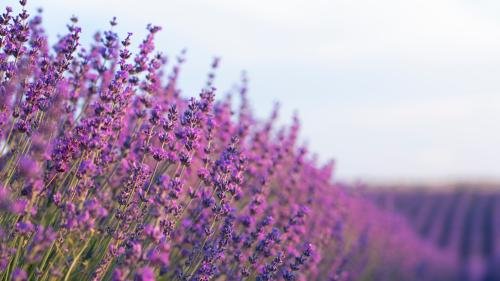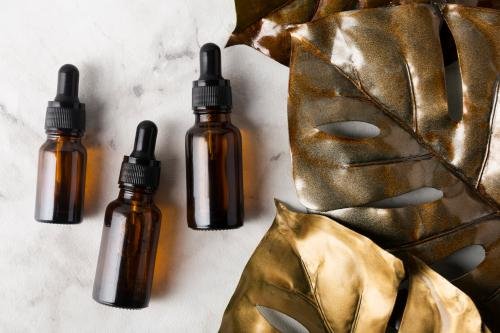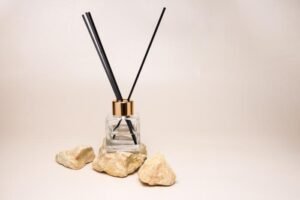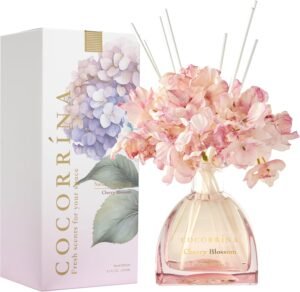Pides aceite esencial de lavanda a dos proveedores distintos y te llega con un olor completamente diferente. Una clienta me contó hace poco que esta situación le hizo preguntarse si uno de los aceites era falso.
El mismo nombre de aceite de fragancia puede oler diferente según el fabricante debido a las distintas fuentes de materias primas, métodos de extracción, proporciones entre sintético y natural y normas de control de calidad. Estas variables de producción crean perfiles aromáticos distintos incluso cuando la etiqueta del producto dice lo mismo.

En mis 15 años de trabajo con fabricantes de fragancias de todo el mundo, he descubierto que esta variación no tiene nada que ver con el engaño. Se trata de la compleja realidad de cómo se fabrican realmente los aceites de fragancia. Permítanme explicarles qué ocurre realmente detrás de esos nombres idénticos de productos.
¿Cómo crean las fuentes de materias primas distintos perfiles olfativos?
El origen geográfico y las condiciones de cultivo de las plantas aromáticas alteran fundamentalmente su composición química y la fragancia resultante.
Las plantas de aceites esenciales de distintas regiones contienen concentraciones variables de compuestos aromáticos debido al clima, el suelo, la altitud y las prácticas de recolección. El aceite de rosa búlgara difiere químicamente del aceite de rosa turca, creando aromas distintos a pesar de que las especies vegetales son idénticas.

Trabajo con proveedores de varios continentes y las diferencias regionales son espectaculares. Cuando analizo aceite de bergamota de Calabria (Italia) frente a bergamota de Turquía, los informes de laboratorio muestran perfiles de terpenos completamente diferentes. La versión italiana suele contener 35-45% de limoneno, mientras que la bergamota turca suele mostrar 25-35%. No se trata de una diferencia de calidad, sino de una realidad geográfica.
Variaciones químicas regionales en los aceites populares
| Aceite esencial | Región en crecimiento | Compuesto primario | Rango porcentual | Carácter olfativo |
|---|---|---|---|---|
| Lavanda | Provenza, Francia | Linalool | 35-45% | Dulce, floral, refinado |
| Lavanda | Bulgaria | Linalool | 25-35% | Más agudo, más parecido al alcanfor |
| Eucalipto | Australia | Eucaliptol | 70-80% | Limpio, medicinal |
| Eucalipto | España | Eucaliptol | 60-70% | Más suave, menos intenso |
| Menta | EEUU Pacífico Noroeste | Mentol | 40-50% | Refrescante, intenso |
| Menta | India | Mentol | 25-35% | Más cálido, más herbal |
Los patrones climáticos durante las estaciones de crecimiento añaden otra capa variable. Las condiciones de sequía suelen concentrar los compuestos aromáticos, mientras que las lluvias excesivas los diluyen. Algunos fabricantes se abastecen de una sola explotación para mantener la uniformidad, mientras que otros mezclan aceites de varias regiones. He visto que el aceite de lavanda del mismo proveedor huele notablemente diferente entre las cosechas de primavera y otoño, simplemente debido a las condiciones de cultivo estacionales.
¿Qué impacto tienen los métodos de extracción en la fragancia final?
Diferentes técnicas de extracción extraen distintos compuestos aromáticos de materias primas idénticas, creando firmas olfativas distintas.
La destilación por vapor captura las notas altas volátiles pero puede perder los compuestos básicos más pesados, mientras que la extracción con CO2 conserva los perfiles aromáticos más completos. Tanto la extracción con disolventes como el prensado en frío producen composiciones químicas únicas a partir del mismo material vegetal.

Las decisiones técnicas que toman los fabricantes durante la extracción cambian drásticamente lo que acaba en la botella. He procesado lotes idénticos de pétalos de rosa utilizando distintos métodos y he obtenido aceites que huelen parecidos pero claramente distintos. La destilación por vapor nos da una rosa brillante y clásica, mientras que la extracción con CO2 crea aromas más profundos y complejos con matices verdes.
Cuadro comparativo de métodos de extracción
| Método de extracción | Temperatura de funcionamiento | Compuestos extraídos | Perfil olfativo resultante | Factor de coste |
|---|---|---|---|---|
| Destilación por vapor | 100°C+ | Moléculas ligeras y volátiles | Luminoso, fresco, tradicional | Bajo |
| Extracción de CO2 | 31°C | Compuestos de espectro completo | Rico, complejo, fiel a la planta | Alta |
| Extracción con disolventes | Variable | Moléculas aromáticas pesadas | Profundo, a veces duro | Medio |
| Expresión fría | Ambiente | Sólo aceites de cítricos | Picante, inestable, natural | Bajo |
| Enfleurage | Ambiente | Flores delicadas | Sutil, refinado, caro | Muy alta |
La calidad del equipo crea otro punto de variación. Los sistemas de destilación modernos, con controles precisos de temperatura, conservan compuestos aromáticos más delicados que los equipos básicos. Cuando visito fábricas, a menudo puedo predecir la calidad del aceite con sólo examinar su equipo de extracción. Los sistemas sofisticados y en buen estado producen resultados más uniformes, mientras que los equipos más antiguos introducen variaciones de un lote a otro que los clientes notan en el aroma final.
¿Cómo afectan las proporciones de mezcla sintética a los nombres de productos idénticos?
La mayoría de los aceites de fragancia comerciales combinan extractos naturales con sustancias químicas aromáticas sintéticas, y los fabricantes utilizan enfoques de formulación muy diferentes.
Un aceite de fragancia "vainilla" de un fabricante puede contener 80% de extracto natural de vainilla, mientras que el aceite "vainilla" de otra empresa sólo utiliza 10% de contenido natural. Estas diferentes proporciones entre natural y sintético crean experiencias olfativas completamente diferentes bajo nombres de productos idénticos.

La industria de las fragancias trabaja con fórmulas complejas que siguen siendo secretos comerciales patentados. Lo que los consumidores ven como "aceite esencial de rosa" puede ser en realidad una sofisticada mezcla de otto de rosa natural, geraniol sintético, alcohol feniletílico y citronelol. Cada fabricante elige diferentes proporciones en función de su mercado objetivo, precio y filosofía de formulación.
Posicionamiento en el mercado y estrategias de combinación
| Mercado destinatario | Contenido natural | Contenido sintético | Precio | Calidad |
|---|---|---|---|---|
| Terapéutica/Aromaterapia | 85-100% | 0-15% | Premium | Ventajas del bienestar |
| Artesano/Boutique | 60-85% | 15-40% | Alta | Aroma auténtico |
| Consumidores/Fragancias para el hogar | 25-60% | 40-75% | Gama media | Rendimiento constante |
| Gran consumo/Industrial | 5-25% | 75-95% | Presupuesto | Rentabilidad |
| Comercial/Mayorista | 0-20% | 80-100% | Volumen | Normalización |
Lo aprendí de primera mano cuando trabajé con dos clientes que pidieron aceite de "sándalo" pero tenían expectativas completamente diferentes. Un cliente estaba familiarizado con el sándalo australiano de primera calidad que contenía 95% de santalol natural, mientras que el otro había utilizado anteriormente una versión para el mercado de masas que era principalmente sintética. Ambos aceites estaban legítimamente etiquetados como "sándalo", pero creaban experiencias olfativas completamente diferentes. Ninguno de los dos clientes estaba equivocado, simplemente estaban comparando productos de diferentes segmentos de mercado con diferentes filosofías de formulación.
Conclusión
Nombres idénticos de aceites de fragancia pueden producir aromas diferentes debido a variaciones legítimas de fabricación en el abastecimiento, la extracción y la mezcla, por lo que una selección informada del proveedor es crucial para obtener resultados uniformes.





